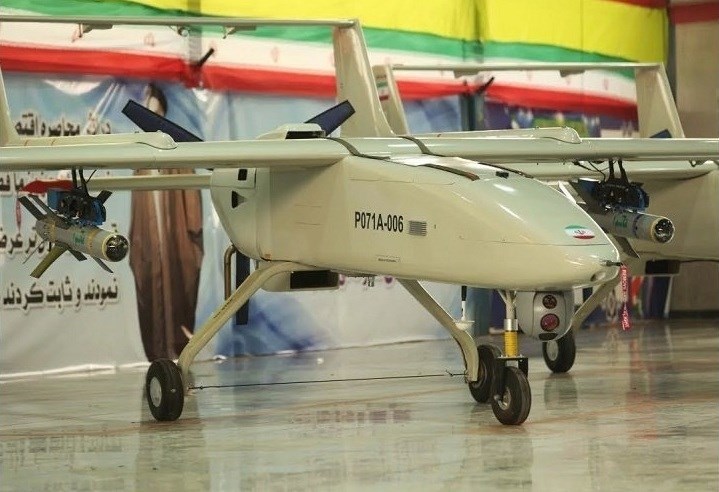The US has announced new export controls targeting parts that Iran uses in manufacturing its drones. According to intelligence reports and US and Ukrainian security officials, inspections of Iranian drone “Shahed 136” revealed that Tehran acquired 40 out of 52 components from 13 US companies, with the remaining 12 parts sourced from companies in Switzerland, Japan, China and Taiwan. Observers therefore question that Washington’s adoption of its previous policies: sanctions on Iran, and export controls on American technology similar to those imposed on the sale of semiconductors or electronic chips to countries such as China and Russia, could in fact be successful, given that these components were procured from private sector companies. Moreover, tracking the end user when networks are set up to circumvent these controls to acquire restricted US technologies poses a significant challenge.
Against this backdrop, the crisis between Washington and Tehran is likely to escalate, a hypothesis supported by the following developments:
Escalating military capabilities in the Middle East : During a recent military drill, Tehran revealed two new drones (“Ababil 5”, “Kaman 12”) as part of the development of its military capabilities. The drones were loaded onto its naval destroyer “Sahand”; an indication of the Iranian army’s plan to advance the line of confrontation towards the Strait of Hormuz and the Gulf of Oman.
Iran had previously used the “McCran” base to launch drones aimed at the other side of the Gulf, but now is able to launch drones from an air craft carrier , capable of launching these new drones as well as other models (“Arsh”, “Mohager 6”).
The Iranian message in this context is that just as the US has upgraded its military capabilities in the region by adding an unmanned Special Force 59, Iran is also upgrading an adding an unmanned force to confront this challenge in the Gulf of Oman and the Arabian Sea down to Bab al-Mandeb.
Iran’s support for Russia in Ukraine war : Iran’s unmanned aerial vehicles no longer only threaten US interests in the Middle East, but are also challenging it in other arenas, with the use of Iranian drones by Russia in Ukraine. This challenge could become more threatening if Iran exports to Russia more sophisticated drones than the “Shahed 136” presently used in Ukraine.
It is important here to take into account two key developments. First, the US National Security Council has already announced (on 9 December) that Moscow has approved a deal to export Russian fighters (SU-35) to Iran, to be paid for in part with Iranian drones and missiles. Reports have already indicated that Moscow exports technology to be used in the development of drones to Iran. Russia has announced it aims to develop and produce its own drones during the next two years, but will rely in the interim on Iranian drones.
The second significant development is that Washington intends to supply Ukraine with a “Patriot” system soon, which would limit Russia’s ability to use missiles and fighters, leading it to rely more drones as an alternative.
Growing capability of Iran’s military: It has generally been the view that the Revolutionary Guard has the most significant military capabilities in Iran, as exemplified by its extensive use of drones. The US has targeted the Revolutionary Guard’s networks of Western suppliers of dual-use equipment. However, recent British reports have revealed that Iran’s army is also involved in procuring dual use equipment through private companies, such as Quds Aviation, a main supplier of drones. Despite being under sanctions, the company was able to enlarge its scope and capabilities.
Israel’s role: The US has turned to Israel to mediate with Russia. Following the US-Israeli dialogue held between US national security adviser Jack Sullivan and Israeli officials on 29 December 2022, US State Department spokesman Ned Price announced that Israel is better-suited to play such a role.
This may indicate a change in US-Israeli relations, with respect to their differing stances towards the standoff with Iran. This was indicated by Israeli Prime Minister Benjamin Netanyahu’s recent comments that Israel could strike Iranian nuclear sites without obtaining prior US consent. It would appear that Washington now is dependent on Tel Aviv, not the other way around.
Main obstacles
It can therefore be argued that the use of Iranian drones in Ukraine has become a new factor in worsening US- Iran relations, and that this makes progress on nuclear negotiations more unlikely. Moreover, Washington’s announced policies aimed to prevent Iran from obtaining certain equipment and technologies are unlikely to succeed for several reasons, including:
The position of private US companies
Although the US is the source of almost two thirds of the imported parts used in the manufacturing of Iranian drones, US companies are traditionally averse to restrictive regulations. The imposition of screening procedures on such components disrupts not only the transactions which may eventually lead to parts reaching Iran, but transactions and contracts with all clients. This problem became clear in the attempt to control commerce in electronic chips. Establishing who the end-user actually will be is difficult, as sales may take place to acceptable companies, but the products eventually find their way to Iran. It would require enormous effort and resources to follow the entire chain, and it is unlikely to be effective.
The Size of Iran’s stockpile:
The actual size of Iran’s stockpile of foreign components is not known, but its large quantity of exported UAVs to its regional proxies indicates that it has acquired a strategic stockpile. Iran can also develop new means of circumventing sanctions whenever its current arrangements are exposed, by further complicating the networks it uses in obtaining its requirements. resort to other alternatives after the American media reveals the details of its findings and investigations.
Limits on Israel’s ability to negotiate with Russia
There are limits on what Israel can achieve in mediating with Russia. Moscow is likely to ask for concessions , such as delaying or reversing the decision to supply Ukraine with the Patriot system. Therefore, Russia is likely to continue using Iranian drones.
In sum, it can be argued that the confrontation between the US and Iran, now taking place both in Ukraine and the Middle East, is rapidly becoming more complicated. The issues involved encompass Iran’s regional posture in the Middle East which threatens US interests, Iran’s nuclear capabilities, as well as the various aspects of the use of Iranian drones. All these issues are likely to deepen differences and escalate tensions between Tehran and Washington even further.


